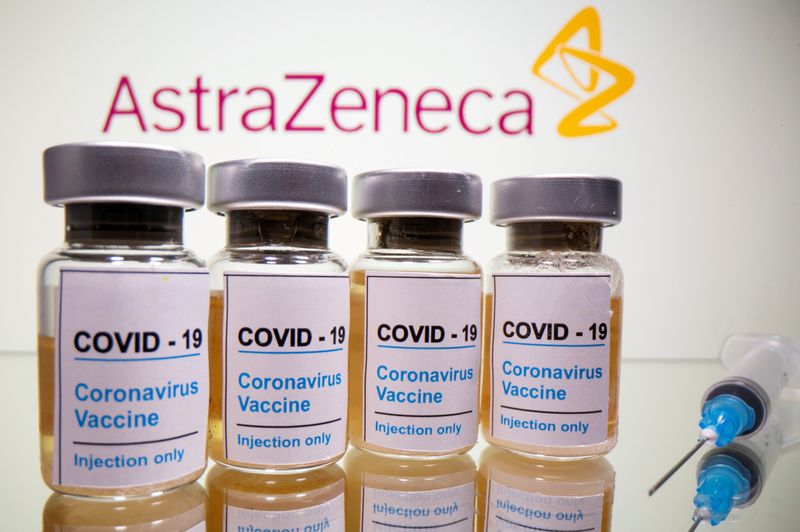LONDON, (Reuters) – AstraZeneca said on Monday its COVID-19 vaccine could be around 90% effective, giving the world another weapon to fight the global pandemic and potentially cheaper to make, easier to distribute and faster to scale-up than rivals.
The British drugmaker said it will have as many as 200 million doses by the end of 2020 – around four times as many as U.S. competitor Pfizer. Seven hundred million doses could be ready globally as soon as the end of the first quarter of 2021.
The vaccine was 90% effective in preventing COVID-19 when it was administered as a half dose followed by a full dose at least a month later, according to data from late-stage trials in Britain and Brazil. No serious safety events were confirmed, the company said.
“This means we have a vaccine for the world,” said Andrew Pollard, director of the Oxford University vaccine group that developed the drug.
The vaccine’s cost works out at just a few dollars a shot, a fraction of the price of drugs from Pfizer and Moderna, which use a more unconventional technology.
And it can be transported and stored at normal fridge temperatures, which proponents say would make it easier to distribute, especially in poor countries, than Pfizer’s, which needs to be shipped and stored at -70C, the sort of temperature typical of an Antarctic winter.
The effectiveness of AstraZeneca’s vaccine depended on the dosing, and fell to just 62% when given as two full doses rather than a half-dose first. But scientists cautioned against seeing this as evidence that it would be less useful than rivals. Vaccines from Pfizer and Moderna each prevented about 95% of cases according to interim data from their late-stage trials.
“I think it is a real fool’s errand to start trying to pick these three (Pfizer/Moderna/Astra) apart on the basis of snippets of phase 3 data from press releases,” said Danny Altmann, professor of immunology at Imperial College London.
“For the bigger picture, my suspicion is that by the time we are a year down the line, we’ll be using all three vaccines with about 90% protection – and we’ll be a lot happier.”
Pascal Soriot, Astra’s chief executive, said the data showing that an initial half dose was more effective than two full doses was good news, as more people could be vaccinated faster with a limited supply.
AstraZeneca’s preliminary trial comes as a new wave of infections has hurt economies, particularly in Europe and the United States. Nearly 1.4 million people have died in the global COVID-19 pandemic.
Britain is among countries that pre-bought large quantities of the AstraZeneca vaccine, and officials there said its success means normal life can return sooner. Prime Minister Boris Johnson described the results as “incredibly exciting”.
Shares and oil prices rose as investors bet the rollout of another vaccine would revive the global economy next year.
The STOXX index of Europe’s 600 largest shares rose 0.5% to its highest since February. Nevertheless, AstraZeneca’s own shares fell 1.5% as traders perceived the efficacy data as disappointing compared with rivals.
Public health experts say the world will need many vaccines to meet global demand.
The AstraZeneca vaccine uses a modified version of a chimpanzee common cold virus to deliver instructions to cells to fight the target virus, a traditional approach to vaccine development and different from the path taken by Pfizer and Moderna, which rely on new technology known as messenger RNA (mRNA).
AstraZeneca, one of Britain’s most valuable listed companies, will now immediately prepare regulatory submission of the data to authorities around the world that have a framework in place for conditional or early approval.
It will also seek an emergency use listing from the World Health Organization to speed up availability in low-income countries. In parallel, the full analysis of the interim results is being submitted for publication in a peer-reviewed journal.

